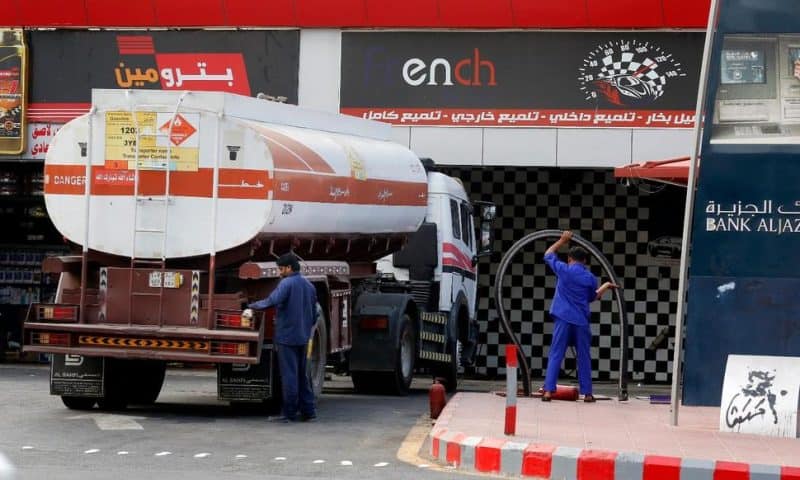Oil prices continued to slide even as the Saudi military blamed Iran for recent attacks to critical oil infrastructure.
NEW YORK — Oil prices retreated for a second day Wednesday even as the Saudi military blamed Iran for recent attacks to critical oil infrastructure and U.S. Secretary of State Mike Pompeo called the strike an “act of war.”
Benchmark U.S. crude fell 2% to close at $58.11 per barrel. It fell nearly 5.7% Tuesday.
It was another day of volatile, unpredictable trading — a taste of the new normal — after Saudi officials said oil production halted by weekend attacks would be fully restored within weeks.
Brent crude, the international benchmark, fell 1.5% to $63.60 per barrel.
A day of heightened tensions in the Persian Gulf normally would send oil prices higher, but fears of an economic slowdown and the decision by the Federal Reserve to cut interest rates sent stocks lower across the board.
The weekend attack on Saudi Aramco’s processing facility in Abqaiq pushed crude prices up more than 14% Monday, a spike equivalent to the Iraq invasion of Kuwait before the 1991 Gulf War. The attack led to a 5% drop in global output, but Saudi Arabia said it would be restored by the end of the month.
Average gasoline prices in the U.S. were $2.65 for a gallon of regular Wednesday, up from $2.59 on Tuesday and $2.56 a week ago.
Experts following the oil drama expect the price ping-pong to continue, and some say the current oil price isn’t fully reflecting the degree to which the recent attack exposed just how susceptible Saudi Arabia’s oil assets are to attack.
“This is a world where Saudi production is now vulnerable, and we weren’t there a week ago,” said Shin Kim, head of supply and production analytics at S&P Global Platts. “We’re going into this very tight period with little to no spare capacity, and the Saudis are drawing down crude stocks pretty significantly …. I don’t think this issue will go away as quickly as prices suggest.”
Some industry watchers doubt Saudi Aramco will be able to fully restore production by the end of the month.
“With the magnitude of damage to the Saudi oil infrastructure, I’m just surprised that they could assess all that within two days or so,” said Jim Ritterbusch, president of Ritterbusch and Associates. “I think that there’s possibly going to be a longer recovery time than what they’re suggesting.”
The International Energy Agency says that it’s not yet considered releasing emergency stocks of crude to offset the drop in output caused by the weekend attacks on Saudi oil installations, because oil markets remain well supplied.
Yemeni rebels claimed responsibility, but U.S. officials said they suspected Iran, Saudi Arabia’s regional rival. On Wednesday, the Saudis put on display what it said were Iranian cruise missile and drones used in the attack.
An escalation in tensions between the U.S. and Iran could push the oil price up again. The cost for a barrel of U.S. crude is up 30% this year and it has yet to return to price levels before the attack Monday, which exposed the vulnerability of Saudi Arabia’s key oil assets.
Saudi Arabia said Wednesday it was joining a U.S.-led coalition to secure the Mideast’s waterways.
The coalition, which includes Australia, Bahrain and the United Kingdom, was formed by the U.S. after attacks on oil tankers that American officials blame on Iran, as well as Iran’s seizure of tankers in the region. Iran denies any connection to the attacks on tankers.

